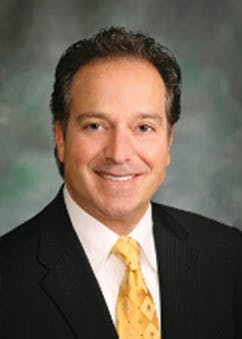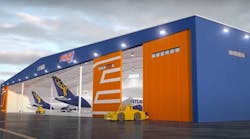The Federal Aviation Administration’s (FAA’s) recent notice of proposed rulemaking (NPRM) regarding air carrier contract maintenance requirements came as no surprise. After all, it stems from the FAA Modernization & Reform Act of 2012 (commonly referred to as the FAA’s 2012 “reauthorization”), which took more than six years to come to fruition.
As the leading trade group for the aviation maintenance industry, the Aeronautical Repair Station Association (ARSA) kept a close eye on developments as Congress worked toward reauthorization. During that time, the Association’s legislative team recommended improvements, and some of which were adopted in the final law. The resulting provision, section 319 (titled “maintenance providers”), is not perfect, but the intent is understood.
Like the NPRM, the basis for section 319 was no surprise. Its origin lies in the Air Midwest (US Airways Express) crash that occurred on Jan. 8, 2003 in Charlotte, NC. The National Transportation Safety Board (NTSB) cited improper maintenance by a facility that did not hold an FAA repair station certificate as a main cause of the accident. Subsequent reports from the Department of Transportation (DOT) Office of the Inspector General (OIG) focused on “noncertificated” maintenance providers that operate with a staff of contract mechanics working under their individual FAA mechanic certificates. To say that this practice became unfavorable in the eyes of lawmakers after the NTSB and DOT OIG reports is perhaps an understatement.
With the purpose behind its creation and the content of section 319 well-known, one could have predicted the resulting regulations in the ensuing FAA NPRM. However, those predictions would have been wrong. The NPRM went well beyond the scope of section 319, and provisions that were in bounds misconstrued the plain language of the legislation.
In its comments to the NPRM, ARSA provided a detailed account of the missteps in the FAA’s proposal. To name just a few, the NPRM fails to distinguish between types of maintenance providers and the type of work being performed; it does not limit the work covered to “aircraft” only; it does not recognize and incorporate existing rules and terminology; and it includes “Part 135” air carriers despite section 319 covering only “Part 121” air carriers. Put simply, the NPRM missed its mark – and kept going.
In addition to general comments, ARSA redrafted a contract maintenance rule meeting the spirit and content of section 319 for the FAA’s consideration (included in appendix C of ARSA’s comments). The Association hopes its proposal receives a favorable response. Otherwise, the industry will be left to deal with the unintended consequences of a muddled and confusing set of duplicative requirements.
Craig L. Fabian is a senior associate for Obadal, Filler, MacLeod, & Klein, where he represents aviation clients on a variety of issues. Fabian worked for Obadal, Filler, MacLeod & Klein from 2006 – 2007 and rejoined the firm in 2009 after serving as Director of Technical Operations for the Air Transport Association (ATA). He was previously an attorney in the aerospace practice of another Washington, D.C., law firm.
Before practicing law, Mr. Fabian spent nearly 15 years in the aviation maintenance industry; first as an aircraft mechanic and avionics technician for Northwest Airlines, then as a maintenance control supervisor for US Airways. More information is available at www.arsa.org.



